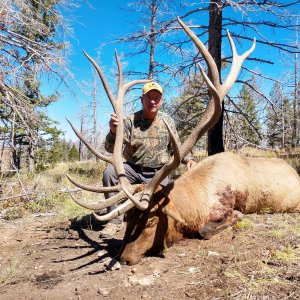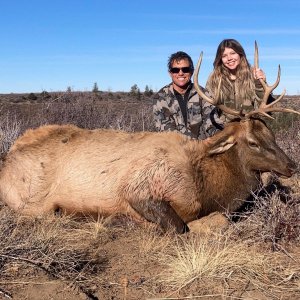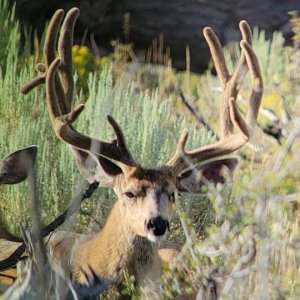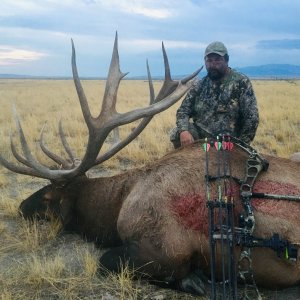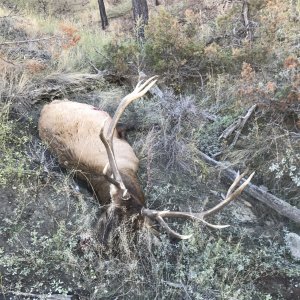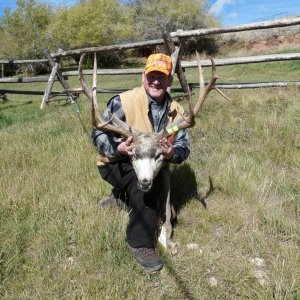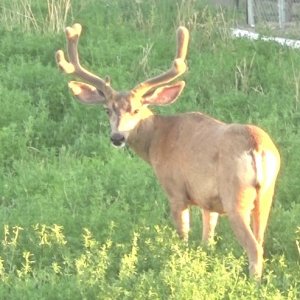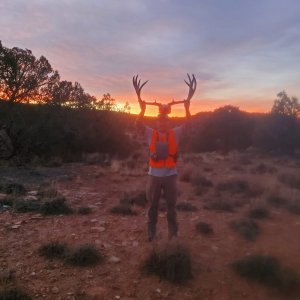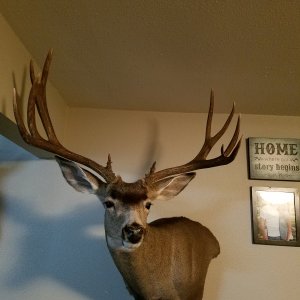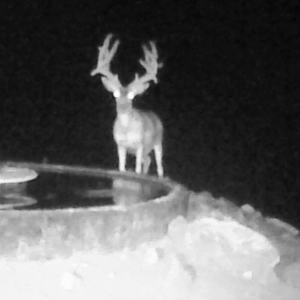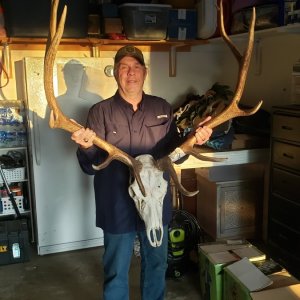You are using an out of date browser. It may not display this or other websites correctly.
You should upgrade or use an alternative browser.
You should upgrade or use an alternative browser.
Trip insurance?
- Thread starter JRABQ
- Start date
Outdoors
Member
- Messages
- 11
I use MedJetAssist. Will be in Alaska in October then in Africa next year.
MedJet is valid anytime are 100 miles or so or further from home even if not a trip related to hunting. They get you at the trailhead so do not come into the bottom of the canyon or top of the mountain. (note: There are other competing plans that will come get you where you fall.)
My outfitter carries insurance to get me to the trailhead so I did not feel needed to get that coverage.
Here is a link to compare 10 or so similar plans:
http://www.totaltravelinsurance.com/travel-insurance-company-list.asp?v=737188
Most airlines will offer insurance in case you cancel the flight to the hunt but of course restrictions apply.
Good luck.
MedJet is valid anytime are 100 miles or so or further from home even if not a trip related to hunting. They get you at the trailhead so do not come into the bottom of the canyon or top of the mountain. (note: There are other competing plans that will come get you where you fall.)
My outfitter carries insurance to get me to the trailhead so I did not feel needed to get that coverage.
Here is a link to compare 10 or so similar plans:
http://www.totaltravelinsurance.com/travel-insurance-company-list.asp?v=737188
Most airlines will offer insurance in case you cancel the flight to the hunt but of course restrictions apply.
Good luck.
llamapacker
Moderator
- Messages
- 1,068
Trip insurance is different than MedJet. Rates vary, of course, but usually run about 10% of the trip cost. Too pricey for me, especially given some of the restrictions usually found. If working with a reputable guide, it shouldn't be necessary. Some feel the peace of mind to be worth the cost. It is not for me, however.
Bill
Bill
I BOUGHT TRIP INSURANCE THROUGH AAA TO INSURE A SHEEP HUNT I WENT ON. IT PAID OFF FOR MOST ANY SITUATION THAT KEEP ME FORM MAKING MY HUNT....PLANE OR AIRPORT PROBLEMS, HEALTH SITUATIONS, BAD WEATHER, TERRORIST ACTIONS, HORSE FALL OR HUNTING MISHAPS, PRETTY MUCH A--Z. COST ON A 13000 DOLLAR HUNT WAS $400 BUCKS THROUGH AAA......IT WAS A GOOD PIECE OF MIND......YD.
Wiszard
Long Time Member
- Messages
- 10,953
I've never heard of this...let me get this straight- You insure that the hunt actually takes place? or you insure yourself on the hunt so you are taken care of if any bodily harm occurs? Not quite sure I get what is being talked about. Thanks for enlightening me.
Steve
Steve
runamuk
Very Active Member
- Messages
- 1,570
LAST EDITED ON Mar-27-09 AT 07:41AM (MST)[p]Here is a story about a guy that sure made his trip insurance
pay off.. here is where he got his insuance..
http://www.travelguard.com/
I am 65 years old and all my life I have wanted to make a solo trip into the Alaskan Wilderness, but have always had either time or money restrictions. Finally in the summer of 2004 I decided that at my age if I was going to do it I had best get at it.
All my life I have done somewhat risky things alone including SCUBA diving and even cave diving. In my life I have totaled 5 cars, 2 motorcycles and 2 airplanes. In the course of these accidents I've managed to break my neck twice, my back has been broken twice, (thankfully the spinal cord was only dinged a bit and never severed) there have been multiple ribs broken with the broken end of one going through a lung, and about 6 brain concussions (possibly the source of most of my problems). In all these incidents I have managed to extricate myself from the wreckage and walk away (in the case of the plane crashes I ran for about a hundred yards before even looking back).
I have never needed to be rescued---until I came to Alaska!
Having read a copy of the Alaska River Guide I decided on a float trip from the Ophir Campgrounds on Steese highway down Ophir Creek to Beaver creek to the Yukon to the Dalton Bridge. According to the Guide and my other research it looked as if the entire distance of about 400 miles would be on class I water---how hard could that be?
Phillips? inflatable at home before the trip.
My only concern was that the water might be too shallow to float my boat. I had a 10 ft Achilles inflatable with a flat wooden rigid decking on the bottom (110 lbs), an 8-horse power outboard (60 lbs), 40 gallons of gas (240 lbs) to get me through the Yukon flats, and about 200 lbs of gear and food. That makes the total of weight of boat and gear 610 lbs.
During May and the middle of June I contacted my outfitter four times to check on water levels and each time was told that it was in good shape (not very accurate as the summer of 2004 was one of the driest on record). The book listed the main cautions to be sweepers. To me sweepers meant willow trees hanging across the water, which I had always been able to push aside on my local rivers without any problem. I had never seen the type of trees found in Alaska that have long thin trunks and little short limbs that can knock you out of the boat or even impale a person if they have been down awhile and gotten seasoned. I had never heard of sleepers or worst of all strainers!
One of my friends, on hearing of what I was planning, advised me to take out as much accidental life insurance as I could in case worst came to worst. This seemed like a reasonable idea even though I could not foresee any scenario where I might need it except the unlikely event of an encounter with mad grizzly.
While searching the internet for companies that would sell me accidental death insurance I found that I could also purchase Travel Guard trip insurance which would cover me 24/7 for the length of the trip up to one month. The trip insurance provided up to $300,000.00 for aerial search and rescue, $50,000.00 medical expenses either for accidents or disease, $2,000.00 living expenses for unforeseen delays, and $1,000.00 for baggage recovery or replacement. Best of all they waived pre-existing medical conditions restrictions provided that I take out the policy within 2 weeks of making my initial trip cost deposit. I figured that probably anything I broke would have already been broken at least once so I made sure to purchase the insurance within the 15 day waiver period---the premium was $104.00---the best investment I ever made!
I had been told that it was about two river miles from the Ophir campground to Beaver Creek---by my GPS it was four. At the campground the creek appeared to be ok. It was narrow but about 1 1/2 ft deep. I figured that about 6 inches was all that was needed to float, so I set out.
Everything went fine for 30 minutes and I covered about two miles by the GPS. Then I high centered on a boulder (sleeper). I tried for about 15 minutes to dislodge the boat before I decided I would have to go in the water. It was cold and about waist deep!
I quickly found out that the only way I could drag the 610 lb boat was to get in front, grip the bow line, face the bow while bending my knees and then by pulling with both my arms and my legs with my legs doing most of the work. Realizing that the boat might get away from me when it came off the boulder, I tied the end of the bowline to my Alice pack harness and started pulling. When the boat broke free it knocked me down and ran over me! Now I was totally wet and cold all over.
I forgot to mention the mosquitoes---they were the worst I had ever seen but my 100% DEET was keeping them off my exposed skin. The main problem with 100% DEET in its liquid form is that it washes off as soon as it is immersed in water, so as soon as I surfaced the mosquitoes went for me. I had thought to put a bottle of DEET in my shirt pocket and I was carrying a pint of charcoal lighter and a couple of road flares in my vest pocket in case I had to build a fire quickly.
I started out with 2 oars (I had tied both oars to the boat with cord) and a kayak paddle (not secured), so I pulled myself back in the boat and started paddling, trying to stay in the high side channel, expecting to run into Beaver Creek around the next bend.
Instead I ran into a strainer, which I did not have time to avoid since the tree went from one side of the narrow creek to the other. The trunk was about 2 feet above the water and the limbs went to the bottom, which was about neck deep. That's when I lost the kayak paddle, as well as being knocked off the boat and totally submerged again.
I pulled a hatchet out of the boat and hacked off enough limbs off to get the boat through. With the paddle gone I had to start rowing to try to navigate around obstacles. The problem with that was in my boat -- which is more of a seagoing dingy -- the oars were set up to row while facing the stern which makes it hard to see where you are going.
I got knocked off the boat again by a sweeper. I then changed tactics by untying one of the oars and using it for a paddle. I lost that one on the next sweeper. Two miles and I've already lost my paddle and one of my oars---only 398 miles to go.
The creek widened and became too shallow to float. I was cold and beginning to shiver hard but I was sure that I would hit Beaver creek around the next bend and the going would be easier since there would be more water. At this point I realized that hypothermia was setting in.
My options were to beach on a gravel bar and build a fire to warm up and dry out or to continue to fight the hypothermia by hard exercising which now consisted of dragging the boat over shallow riffles almost constantly.
Figuring that I was bound to hit Beaver Creek any moment, and knowing that if I got out of the creek then I would only have to get back in it to keep going, I decided to tough it out.
The hypothermia advanced until I was starting to fall down a lot. Over the next 10 hours I estimate that I floated for about 15 minutes and dragged that 610 lb boat --which now had about 4 inches of water in it -- for about 9 hours and 45 minutes.
The mosquitoes put me in a catch 22 situation. I had to keep moving to keep my core temperature up. I would occasionally stop and gasp for breath and suck in 4 or 5 mosquitoes, which would stick in my throat. I would have to stop and try to cough them up and then when I quit moving the shivering would start again.
I had 2-gallon jugs of water in the boat and decided that it was easier to take a swig of water and wash them down that it was to try to cough them up. During the next 10 hours I drank 1 1/2 gallons of water washing them down. This kept me pretty well hydrated and may have saved my life.
Before I got to Beaver Creek it had become too hard to get in and out of the boat so I would just kind of hang onto the side when the water was deep enough to float (not often).
After ten hours I got to Beaver Creek and got into the boat. Almost immediately I went to sleep (one of the last symptoms of hypothermia). Fortunately I hit a rock, which woke me up and realized I had to get warm and dry in a hurry.
I was close to the high side bank so I started paddling with my one remaining oar to a gravel bar on the other side of the creek where there were several piles of driftwood. I ran aground in midstream so I tied a longer rope to the bowline with the other end tied to me and waded ashore. There I squirted half a bottle of charcoal lighter onto a good sized pile of driftwood, struck a road flare and by the time I could drag the boat to shore I had a great fire going.
After changing into dry clothes I got out my camp chair, set it up in front of the fire so I could get good and warm---the hypothermia problem was over (I thought). What came next was rhabdomyolysis, something I had never heard of. First I retrieved my sat phone from a water proof case in the boat and called my wife back in Arkansas to let her know that I was all right, had had a little hard luck and would pitch camp where I was and be there for a day or so drying out. I also gave her my location coordinates from the GPS. She later told me that my speech was extremely slurred and that I sounded drunk. That really bothered her, as I don't drink.
I woke up 6 hours later with the sat phone on the ground and the fire burned out. I was pretty confused. I was having a real hard time getting my brain to work. I was lucid enough to take stock of my situation. My camera gear, a camcorder, digital still camera, and two 35mm film cameras had been in dry bag in the floor of the boat. The boat had about 4 inches of water in the bottom and over the course of 16 hours the camera dry bag had leaked and all the camera gear was ruined---a pictures were intended to be a major part of my trip.
When I hit the strainer a limb had knocked the engine cover off the outboard and bent the cover latch so that it would not stay on. While the boat was broached on the tree, water came over the stern. The ignition was wet and the engine would not so much as fire. It could have probably been dried out with some WD40 I had brought but it was pretty discouraging.
I had also brought a 10-watt solar panel to keep all of my camera batteries as well as my GPS and sat phone charged up. The panel was waterproof but the charging connector was not and shorted out.
About that time I had to get rid of that gallon and a half of water I had drunk. My urine came out about color and consistency of light maple syrup. It was so thick that it didn't even splash against the rocks! Even in my muddled state of mind this was alarming.
According to my GPS I had come 4.16 miles on my epic lifetime dream trip---about 396 miles to go. I only had one oar left, the outboard motor wouldn't run, my camera gear was ruined, the solar panel was not working and I had also lost my map case. I knew that if I by some chance made it to the Yukon Flats that I was going to have to make it over a hundred miles of flat water with only one oar---almost up the creek without the paddle! On top of that I was walking around like I was in a fog, my eyes were playing tricks on me and I was peeing syrup!
I called my wife back in Arkansas and told her the situation. She later told me that I again sounded drunk and that my speech was very slurred. I asked her to call the insurance company and ask them what my options were. I told her that I would hang up and turn the phone off to conserve batteries and that I would call her back in about a half hour.
When I called her back she told me that as soon as she told the insurance man what had happened and the symptoms I was experiencing he immediately told her that they had to get me out and to a hospital as soon as possible. He kept her on the line while he called the Alaska State Troopers in Fairbanks and told them that his company was approving the cost of a medevac by helicopter.
While my wife was still on the line the Troopers called Ft. Wainwright I think, and a chopper and paramedics were sent out to my coordinates before she hung up---less that 20 minutes!
About 15 minutes later I heard the rotors and as it came over a ridge about 5 or 6 miles away, I could see that it was heading straight for me. The paramedic told me that the GPS coordinates were right on the money (the GPS was a Magellan, and the Sat phone was an Iridium Motorola model 9500).
As we lifted off we noticed a forest fire had started about 5 or 6 miles to the south. It became the Boundary forest fire of 2004, which burned almost 1,000,000 acres. It was moving to the north from the south. Beaver Creek at that point runs from east to west. If I hadn't been medevaced out I would have been right in the path of the fire. Some trips are not meant to happen.
When I got to the Fairbanks Hospital I was diagnosed with Rhabdomyolysis. The doctor explained it as being a condition brought on by extreme physical exertion and exhaustion exacerbated by cold-water exposure. It is usually associated with marathon runners. Some have been known to drop dead from it. It is the same thing that will cause a horse to drop dead if he is run to death. Basically the muscle tissue starts breaking down and turning to fluid, which is then flushed from the body through the kidneys. When the tissue breakdown overloads the kidneys the kidneys fail and then the rest of the body organs fail.
I would not have had to worry about the Yukon flats and one oar, as I would never have made it that far. The body is always sending some dead muscle cells through the kidneys and it is measured as a CPK level. Under normal conditions the CPK level is 60-90. Mine was 13,825.
After two days in the hospital with an IV in both arms I was released. The next day I hired a bush pilot to fly me out to where my boat and gear were located to see if we could retrieve them. There was perhaps enough space to land, but not enough to take off.
The pilot said he had never seen the creek so low and there wasn't enough water to land a float plane or for someone to bring a boat in, so the only alternative was to get a helicopter.
I was given the phone number of Troy at Chena Aviation who was able to work me in the next day. His helicopter was too small to get the gear in one load so I rented a pickup truck and was lucky enough to get the fire crews who were working the fire to let me drive to a turn out just east of mile 56 on the Steese highway.
I had given Troy the GPS coordinates to the turn out and when I got there with the truck it was only about 3 minutes till he showed up with the first of 3 loads. I flew back into Beaver Creek with him and we loaded the second load and I stayed behind to breakdown and pack the boat. Everything went like clock work.
Coming in with the chopper for the boat recovery.
The best part was that my travel insurance that I had paid $104.00 for paid all the expenses, over $10,000 for hospital bills, helicopter, motel costs, meals, a couple sets of clothes, and even the truck rental and gas. I don't know how much they paid the government for the medevac, but it was a big chopper.
Then when I called Alaska Airlines to change my departure date for home, (my original ticket was a freebie from frequent flyer miles) the airline told me that I couldn't change my reservation and would have to wait almost 2 weeks. That would have been my original departure date, or pay $1037.00 for a one way-ticket. I called the insurance company and they got me a ticket for the next day---free!
Here?s my take home message:
1. If the trip is iffy to begin with, buy trip insurance!!!
2. Do your wife a favor and take out lots of Accidental death insurance---its cheap--$30.00 a month for each $250,000.00 policy. You can cancel it when you get back.
3. If your going to do a float trip solo make sure that the name of the body of water ends in RIVER! Stay away from anything that ends in creek.
4. No matter what your background is in the lower 48, if you don't spend an awful lot of time in ALASKA---you're a greenhorn amateur.
5. If Alaska (and Murphy) want to kick your rear---they'll do it!
6. A GPS and a Sat phone are worth their weight in gold when you need them.
I have reservations for another solo float made for summer 2005. (But not on Beaver Creek -- its probably all burned over any way.) This time I am getting a floatplane to fly me UP the river and will then float back down to the point he picks me up. That will give me a chance to see what I am getting into. I will also leave the outboard at home so I won't need 40 gallons of gas. That will cut my weight in half.
I have told my wife not to tell any friends or relatives that I'm going again. That way if I blow it this summer, I can just kinda slink back into town with my tail between my legs and start planning for 2006.
Author Lee Phillips on a trip to Seward, Alaska
Published January 2005
pay off.. here is where he got his insuance..
http://www.travelguard.com/
I am 65 years old and all my life I have wanted to make a solo trip into the Alaskan Wilderness, but have always had either time or money restrictions. Finally in the summer of 2004 I decided that at my age if I was going to do it I had best get at it.
All my life I have done somewhat risky things alone including SCUBA diving and even cave diving. In my life I have totaled 5 cars, 2 motorcycles and 2 airplanes. In the course of these accidents I've managed to break my neck twice, my back has been broken twice, (thankfully the spinal cord was only dinged a bit and never severed) there have been multiple ribs broken with the broken end of one going through a lung, and about 6 brain concussions (possibly the source of most of my problems). In all these incidents I have managed to extricate myself from the wreckage and walk away (in the case of the plane crashes I ran for about a hundred yards before even looking back).
I have never needed to be rescued---until I came to Alaska!
Having read a copy of the Alaska River Guide I decided on a float trip from the Ophir Campgrounds on Steese highway down Ophir Creek to Beaver creek to the Yukon to the Dalton Bridge. According to the Guide and my other research it looked as if the entire distance of about 400 miles would be on class I water---how hard could that be?
Phillips? inflatable at home before the trip.
My only concern was that the water might be too shallow to float my boat. I had a 10 ft Achilles inflatable with a flat wooden rigid decking on the bottom (110 lbs), an 8-horse power outboard (60 lbs), 40 gallons of gas (240 lbs) to get me through the Yukon flats, and about 200 lbs of gear and food. That makes the total of weight of boat and gear 610 lbs.
During May and the middle of June I contacted my outfitter four times to check on water levels and each time was told that it was in good shape (not very accurate as the summer of 2004 was one of the driest on record). The book listed the main cautions to be sweepers. To me sweepers meant willow trees hanging across the water, which I had always been able to push aside on my local rivers without any problem. I had never seen the type of trees found in Alaska that have long thin trunks and little short limbs that can knock you out of the boat or even impale a person if they have been down awhile and gotten seasoned. I had never heard of sleepers or worst of all strainers!
One of my friends, on hearing of what I was planning, advised me to take out as much accidental life insurance as I could in case worst came to worst. This seemed like a reasonable idea even though I could not foresee any scenario where I might need it except the unlikely event of an encounter with mad grizzly.
While searching the internet for companies that would sell me accidental death insurance I found that I could also purchase Travel Guard trip insurance which would cover me 24/7 for the length of the trip up to one month. The trip insurance provided up to $300,000.00 for aerial search and rescue, $50,000.00 medical expenses either for accidents or disease, $2,000.00 living expenses for unforeseen delays, and $1,000.00 for baggage recovery or replacement. Best of all they waived pre-existing medical conditions restrictions provided that I take out the policy within 2 weeks of making my initial trip cost deposit. I figured that probably anything I broke would have already been broken at least once so I made sure to purchase the insurance within the 15 day waiver period---the premium was $104.00---the best investment I ever made!
I had been told that it was about two river miles from the Ophir campground to Beaver Creek---by my GPS it was four. At the campground the creek appeared to be ok. It was narrow but about 1 1/2 ft deep. I figured that about 6 inches was all that was needed to float, so I set out.
Everything went fine for 30 minutes and I covered about two miles by the GPS. Then I high centered on a boulder (sleeper). I tried for about 15 minutes to dislodge the boat before I decided I would have to go in the water. It was cold and about waist deep!
I quickly found out that the only way I could drag the 610 lb boat was to get in front, grip the bow line, face the bow while bending my knees and then by pulling with both my arms and my legs with my legs doing most of the work. Realizing that the boat might get away from me when it came off the boulder, I tied the end of the bowline to my Alice pack harness and started pulling. When the boat broke free it knocked me down and ran over me! Now I was totally wet and cold all over.
I forgot to mention the mosquitoes---they were the worst I had ever seen but my 100% DEET was keeping them off my exposed skin. The main problem with 100% DEET in its liquid form is that it washes off as soon as it is immersed in water, so as soon as I surfaced the mosquitoes went for me. I had thought to put a bottle of DEET in my shirt pocket and I was carrying a pint of charcoal lighter and a couple of road flares in my vest pocket in case I had to build a fire quickly.
I started out with 2 oars (I had tied both oars to the boat with cord) and a kayak paddle (not secured), so I pulled myself back in the boat and started paddling, trying to stay in the high side channel, expecting to run into Beaver Creek around the next bend.
Instead I ran into a strainer, which I did not have time to avoid since the tree went from one side of the narrow creek to the other. The trunk was about 2 feet above the water and the limbs went to the bottom, which was about neck deep. That's when I lost the kayak paddle, as well as being knocked off the boat and totally submerged again.
I pulled a hatchet out of the boat and hacked off enough limbs off to get the boat through. With the paddle gone I had to start rowing to try to navigate around obstacles. The problem with that was in my boat -- which is more of a seagoing dingy -- the oars were set up to row while facing the stern which makes it hard to see where you are going.
I got knocked off the boat again by a sweeper. I then changed tactics by untying one of the oars and using it for a paddle. I lost that one on the next sweeper. Two miles and I've already lost my paddle and one of my oars---only 398 miles to go.
The creek widened and became too shallow to float. I was cold and beginning to shiver hard but I was sure that I would hit Beaver creek around the next bend and the going would be easier since there would be more water. At this point I realized that hypothermia was setting in.
My options were to beach on a gravel bar and build a fire to warm up and dry out or to continue to fight the hypothermia by hard exercising which now consisted of dragging the boat over shallow riffles almost constantly.
Figuring that I was bound to hit Beaver Creek any moment, and knowing that if I got out of the creek then I would only have to get back in it to keep going, I decided to tough it out.
The hypothermia advanced until I was starting to fall down a lot. Over the next 10 hours I estimate that I floated for about 15 minutes and dragged that 610 lb boat --which now had about 4 inches of water in it -- for about 9 hours and 45 minutes.
The mosquitoes put me in a catch 22 situation. I had to keep moving to keep my core temperature up. I would occasionally stop and gasp for breath and suck in 4 or 5 mosquitoes, which would stick in my throat. I would have to stop and try to cough them up and then when I quit moving the shivering would start again.
I had 2-gallon jugs of water in the boat and decided that it was easier to take a swig of water and wash them down that it was to try to cough them up. During the next 10 hours I drank 1 1/2 gallons of water washing them down. This kept me pretty well hydrated and may have saved my life.
Before I got to Beaver Creek it had become too hard to get in and out of the boat so I would just kind of hang onto the side when the water was deep enough to float (not often).
After ten hours I got to Beaver Creek and got into the boat. Almost immediately I went to sleep (one of the last symptoms of hypothermia). Fortunately I hit a rock, which woke me up and realized I had to get warm and dry in a hurry.
I was close to the high side bank so I started paddling with my one remaining oar to a gravel bar on the other side of the creek where there were several piles of driftwood. I ran aground in midstream so I tied a longer rope to the bowline with the other end tied to me and waded ashore. There I squirted half a bottle of charcoal lighter onto a good sized pile of driftwood, struck a road flare and by the time I could drag the boat to shore I had a great fire going.
After changing into dry clothes I got out my camp chair, set it up in front of the fire so I could get good and warm---the hypothermia problem was over (I thought). What came next was rhabdomyolysis, something I had never heard of. First I retrieved my sat phone from a water proof case in the boat and called my wife back in Arkansas to let her know that I was all right, had had a little hard luck and would pitch camp where I was and be there for a day or so drying out. I also gave her my location coordinates from the GPS. She later told me that my speech was extremely slurred and that I sounded drunk. That really bothered her, as I don't drink.
I woke up 6 hours later with the sat phone on the ground and the fire burned out. I was pretty confused. I was having a real hard time getting my brain to work. I was lucid enough to take stock of my situation. My camera gear, a camcorder, digital still camera, and two 35mm film cameras had been in dry bag in the floor of the boat. The boat had about 4 inches of water in the bottom and over the course of 16 hours the camera dry bag had leaked and all the camera gear was ruined---a pictures were intended to be a major part of my trip.
When I hit the strainer a limb had knocked the engine cover off the outboard and bent the cover latch so that it would not stay on. While the boat was broached on the tree, water came over the stern. The ignition was wet and the engine would not so much as fire. It could have probably been dried out with some WD40 I had brought but it was pretty discouraging.
I had also brought a 10-watt solar panel to keep all of my camera batteries as well as my GPS and sat phone charged up. The panel was waterproof but the charging connector was not and shorted out.
About that time I had to get rid of that gallon and a half of water I had drunk. My urine came out about color and consistency of light maple syrup. It was so thick that it didn't even splash against the rocks! Even in my muddled state of mind this was alarming.
According to my GPS I had come 4.16 miles on my epic lifetime dream trip---about 396 miles to go. I only had one oar left, the outboard motor wouldn't run, my camera gear was ruined, the solar panel was not working and I had also lost my map case. I knew that if I by some chance made it to the Yukon Flats that I was going to have to make it over a hundred miles of flat water with only one oar---almost up the creek without the paddle! On top of that I was walking around like I was in a fog, my eyes were playing tricks on me and I was peeing syrup!
I called my wife back in Arkansas and told her the situation. She later told me that I again sounded drunk and that my speech was very slurred. I asked her to call the insurance company and ask them what my options were. I told her that I would hang up and turn the phone off to conserve batteries and that I would call her back in about a half hour.
When I called her back she told me that as soon as she told the insurance man what had happened and the symptoms I was experiencing he immediately told her that they had to get me out and to a hospital as soon as possible. He kept her on the line while he called the Alaska State Troopers in Fairbanks and told them that his company was approving the cost of a medevac by helicopter.
While my wife was still on the line the Troopers called Ft. Wainwright I think, and a chopper and paramedics were sent out to my coordinates before she hung up---less that 20 minutes!
About 15 minutes later I heard the rotors and as it came over a ridge about 5 or 6 miles away, I could see that it was heading straight for me. The paramedic told me that the GPS coordinates were right on the money (the GPS was a Magellan, and the Sat phone was an Iridium Motorola model 9500).
As we lifted off we noticed a forest fire had started about 5 or 6 miles to the south. It became the Boundary forest fire of 2004, which burned almost 1,000,000 acres. It was moving to the north from the south. Beaver Creek at that point runs from east to west. If I hadn't been medevaced out I would have been right in the path of the fire. Some trips are not meant to happen.
When I got to the Fairbanks Hospital I was diagnosed with Rhabdomyolysis. The doctor explained it as being a condition brought on by extreme physical exertion and exhaustion exacerbated by cold-water exposure. It is usually associated with marathon runners. Some have been known to drop dead from it. It is the same thing that will cause a horse to drop dead if he is run to death. Basically the muscle tissue starts breaking down and turning to fluid, which is then flushed from the body through the kidneys. When the tissue breakdown overloads the kidneys the kidneys fail and then the rest of the body organs fail.
I would not have had to worry about the Yukon flats and one oar, as I would never have made it that far. The body is always sending some dead muscle cells through the kidneys and it is measured as a CPK level. Under normal conditions the CPK level is 60-90. Mine was 13,825.
After two days in the hospital with an IV in both arms I was released. The next day I hired a bush pilot to fly me out to where my boat and gear were located to see if we could retrieve them. There was perhaps enough space to land, but not enough to take off.
The pilot said he had never seen the creek so low and there wasn't enough water to land a float plane or for someone to bring a boat in, so the only alternative was to get a helicopter.
I was given the phone number of Troy at Chena Aviation who was able to work me in the next day. His helicopter was too small to get the gear in one load so I rented a pickup truck and was lucky enough to get the fire crews who were working the fire to let me drive to a turn out just east of mile 56 on the Steese highway.
I had given Troy the GPS coordinates to the turn out and when I got there with the truck it was only about 3 minutes till he showed up with the first of 3 loads. I flew back into Beaver Creek with him and we loaded the second load and I stayed behind to breakdown and pack the boat. Everything went like clock work.
Coming in with the chopper for the boat recovery.
The best part was that my travel insurance that I had paid $104.00 for paid all the expenses, over $10,000 for hospital bills, helicopter, motel costs, meals, a couple sets of clothes, and even the truck rental and gas. I don't know how much they paid the government for the medevac, but it was a big chopper.
Then when I called Alaska Airlines to change my departure date for home, (my original ticket was a freebie from frequent flyer miles) the airline told me that I couldn't change my reservation and would have to wait almost 2 weeks. That would have been my original departure date, or pay $1037.00 for a one way-ticket. I called the insurance company and they got me a ticket for the next day---free!
Here?s my take home message:
1. If the trip is iffy to begin with, buy trip insurance!!!
2. Do your wife a favor and take out lots of Accidental death insurance---its cheap--$30.00 a month for each $250,000.00 policy. You can cancel it when you get back.
3. If your going to do a float trip solo make sure that the name of the body of water ends in RIVER! Stay away from anything that ends in creek.
4. No matter what your background is in the lower 48, if you don't spend an awful lot of time in ALASKA---you're a greenhorn amateur.
5. If Alaska (and Murphy) want to kick your rear---they'll do it!
6. A GPS and a Sat phone are worth their weight in gold when you need them.
I have reservations for another solo float made for summer 2005. (But not on Beaver Creek -- its probably all burned over any way.) This time I am getting a floatplane to fly me UP the river and will then float back down to the point he picks me up. That will give me a chance to see what I am getting into. I will also leave the outboard at home so I won't need 40 gallons of gas. That will cut my weight in half.
I have told my wife not to tell any friends or relatives that I'm going again. That way if I blow it this summer, I can just kinda slink back into town with my tail between my legs and start planning for 2006.
Author Lee Phillips on a trip to Seward, Alaska
Published January 2005
R
rcoplin
Guest
Yes, go to www.sportsmenna.com and on the home page there is a banner ad on the left side under the login - cant miss it - for Travel Insurance for Sportsmen. Click on it and it will get you where you need to go - we are one of this companies affiliates - they are the leader for this type of travel insurance
R
rcoplin
Guest
Lee - this is an unbelievable story and some great lessons of survival.Having done a similar trip in Alaska I know exactly what what you were going through and the challenges. I think this story is important for as many people as possible to read so when they set out on their adventure, they prepare properly. I would like to post your story on our website - www.sportsmenna.com - go take a look - Our new site will be launching in a couple of weeks and this would fit great in the Hunter Safety section and others. Let me know if you are ok with me including this.
rodney coplin, VP Marketing Sportsmen of North America
[email protected]
rodney coplin, VP Marketing Sportsmen of North America
[email protected]

